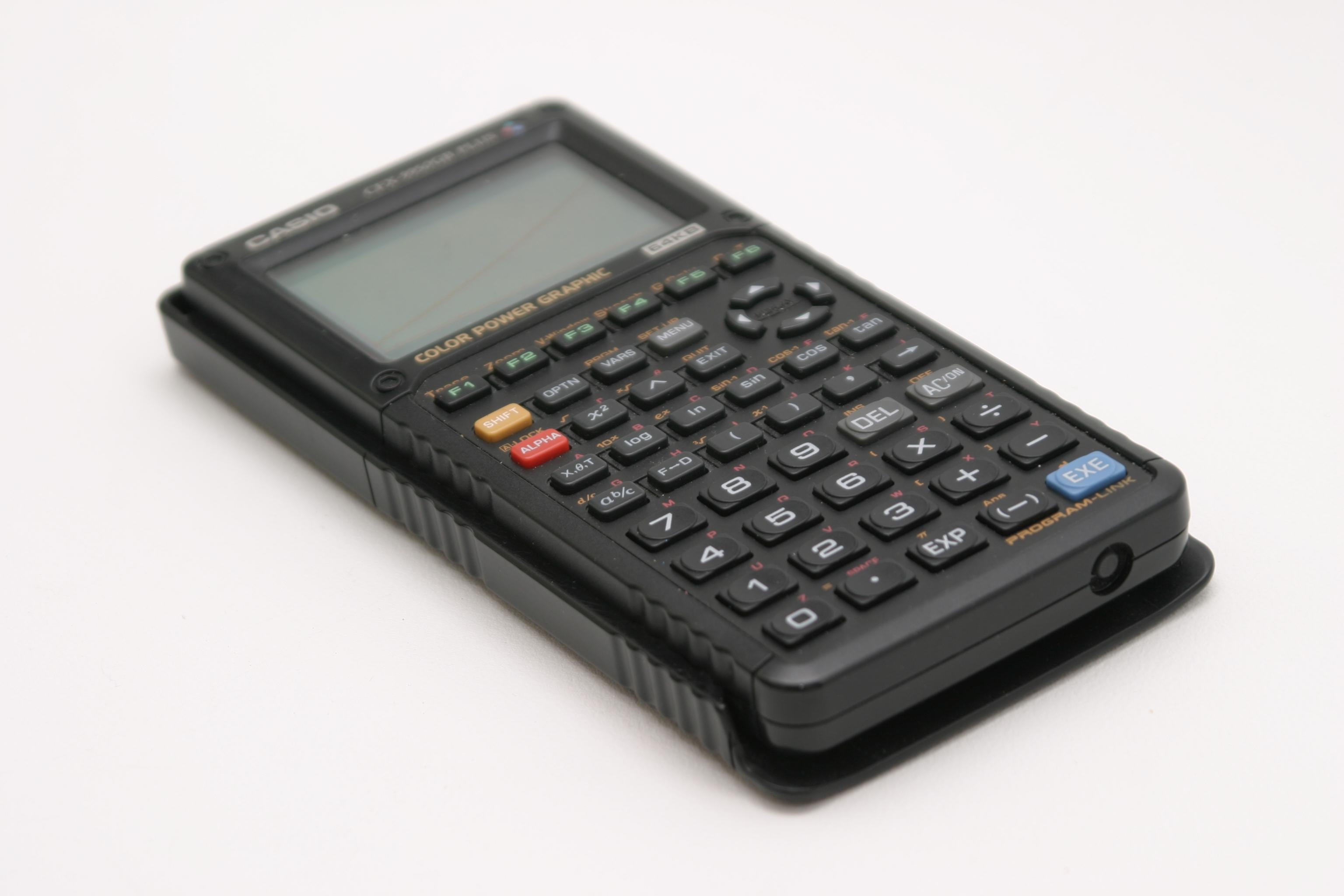I’d like to take a short break from this blog’s standard guns-and-death -related programming and turn my attention to another topic that’s near and dear to my heart: graphing calculators, and the retail theft thereof. An alert reader sent me this wonderful story from the Salt Lake Tribune about an inept pair of thieves arrested on suspicion of stealing $15,000 worth of graphing calculators from area Walmarts. Their alleged methods were not exactly Euclidean in their complexity:
Salt Lake City Detective Veronica Montoya said the couple would go into stores and find something for sale in a large box, such as a car seat. They would then empty out the box, fill it with graphing calculators and check out, paying only the price listed on the box.
This is the sort of scheme that might work in the short term, but is guaranteed to fall apart eventually, given that Walmart employs security guards who are likely to have their curiosity piqued by the two sketchy people over in Aisle 10 tossing TI-84s into an empty car-seat box. And, sure enough, the scheme did fall apart, but in a way that’s much more stupid than you’re probably thinking. You should really go over to the Tribune’s site and read the whole thing.
The bigger question, though, is this: Why graphing calculators? When I was in high school back in the 1990s, my graphing calculator was the most expensive digital device that I owned, and I guarded it closely. Calculator theft was a real danger at my high school, so I took a paint pen and colored the entire thing yellow, in order to make it too ugly to steal. I’ve never taken that much care with anything else I’ve ever owned. I loved that stupid calculator.
But it’s 2013, and, frankly, I was surprised to learn that graphing calculators even still exist, and that they have any resale value at all in the smartphone era. I mean, theoretically they could have been throwing any number of small, expensive items into that big, empty box, right? What exactly do you do with $15,000 worth of stolen graphing calculators?
Resell them to other stores. This is the obvious play. If you’ve got a line on a sketchy school-supply merchant who isn’t afraid to dabble in some back-alley dealings, then you could stand to make a decent profit on these stolen calculators. Well, a profit, at any rate.
Resell them to individual math students. This is another option, albeit a less lucrative one, given that high school students do not always have a lot of money, and also that they have likely been instructed since childhood to avoid creepy strangers who try to lure them into cars with promises of cut-rate calculators.
Pretend they are smartphones and sell them to stupid people. Hear me out, this could work. You’d have to target the sort of people who mistake oregano for marijuana, or Onion headlines for real news, but there are more of those people out there than you might think. Stencil a Nokia logo on the back of the calculator, call it the hot new Android device, and go out and find some suckers in the dark.
Use them to learn calculus. If one graphing calculator can help you learn basic calculus in a year, then 108 graphing calculators can help you learn it in a couple of weeks, right? I’d double-check this math, but I don’t actually have a graphing calculator handy right now, so I’m just going to assume that it’s true.
Network them for the world’s most awesome game of “Drugwars”. Well, naturally, this is the right answer.
Crime is Slate’s crime blog. Like us on Facebook, and follow us on Twitter @slatecrime.
